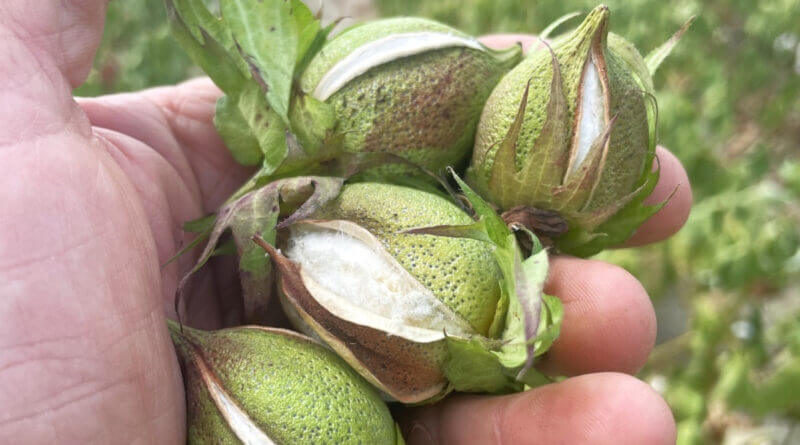Gipson encourages farmers and ranchers to report drought damages
Photo: Cotton bolls dried up and fell to the ground due to the excessive heat conditions and severe drought that south-central Mississippi has experienced since early July. (Photo by Bullock’s Ag Consulting/Trey Bullock)
Over two-thirds of the state of Mississippi is experiencing drought conditions due to the high temperatures and little to no rainfall. According to the latest U.S. Drought Monitor, nearly 70 percent of the state is experiencing dry conditions with 36 percent experiencing severe to exceptional drought conditions. A number of agricultural crops and livestock are being impacted by the drought.
“It’s the worst drought we’ve seen in a long, long time. The Mississippi Department of Agriculture and Commerce is monitoring the conditions and keeping in close contact with our partners at USDA to evaluate the situation and determine which programs will be made available to those in affected areas,” said Commissioner of Agriculture and Commerce Andy Gipson.
A USDA Secretarial Disaster Declaration has named two southwest Mississippi counties, Amite and Wilkinson, as Disaster Designation Areas. Farmers in these counites and the four contiguous counties, Adams, Franklin, Lincoln and Pike, are eligible to be considered for USDA emergency loan assistance. Currently, producers in 20 counties are eligible to apply for USDA’s Livestock Forage Disaster Program, which assists producers suffering grazing losses on native or improved pastureland due to a qualifying drought. The number of counties eligible for these programs are expected to increase. Farmers should contact their local USDA offices for additional information on these programs, including eligible counties.
“Having timely and accurate information on how this drought is impacting our farmers is crucial and can make a difference in the availability of assistance programs. I highly encourage all farmers and ranchers affected to please contact your local USDA county office to report drought impacts and crop damage as well as reporting to the U.S. Drought Monitor,” said Gipson. “Producers not registered with USDA should begin that process as soon as possible so you don’t miss important deadline dates. Crop insurance policy holders are encouraged to reach out to their providers for further guidance.”
The Mississippi State University Extension Service has the Mississippi Hay Directory available for those in need of purchasing hay. The Hay Directory is available online at https://extension.msstate.edu/content/mississippi-hay-directory. Producers can report drought information to the U.S. Drought Monitor at https://bit.ly/Drought2023.






